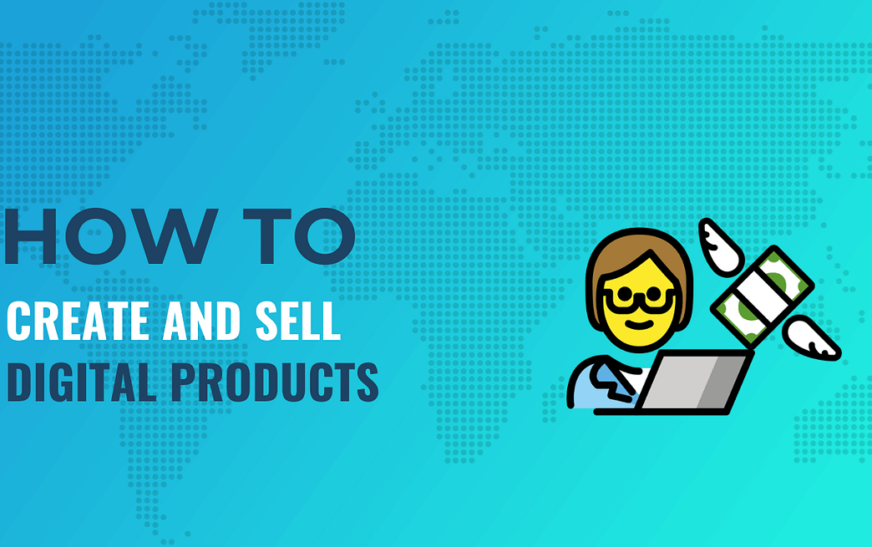Introduction to Digital Products
In today’s digital landscape, the potential to monetize your skills and creativity has never been greater. Whether you’re a savvy entrepreneur or a passionate hobbyist, digital products offer an exciting avenue for generating income online. From eBooks and online courses to graphic designs and software tools, the options are virtually limitless. The beauty of these products lies in their ability to reach a global audience without the constraints of traditional retail. If you’re eager to turn your expertise into revenue, it’s time to explore how you can maximize your online earnings through strategic approaches and smart marketing tactics. Let’s dive into this dynamic world where passion meets profit!
Popular Types of Digital Products
 Digital products come in various forms, each catering to different audiences and needs. E-books are among the most popular, offering valuable insights on a myriad of subjects. They can be easily created and distributed through platforms like Amazon or your own website.
Digital products come in various forms, each catering to different audiences and needs. E-books are among the most popular, offering valuable insights on a myriad of subjects. They can be easily created and distributed through platforms like Amazon or your own website.
Online courses have gained momentum as people look to upskill from the comfort of home. Platforms such as Udemy and Teachable allow creators to share their knowledge effectively.
Another growing category is digital artwork and graphics. Artists can sell illustrations, logos, or templates directly through marketplaces like Etsy or Creative Market.
Software applications also fall under this umbrella. Whether it’s mobile apps or desktop solutions, innovative tools help solve specific problems for users.
Subscription-based models offer ongoing value with newsletters or exclusive content access. This ensures continuous engagement while generating recurring revenue streams for businesses.
Advantages of Selling Digital Products Online
 Selling digital products online opens doors to a world of opportunities. One standout advantage is the low overhead cost. There’s no need for inventory or shipping logistics, which means higher profit margins.
Selling digital products online opens doors to a world of opportunities. One standout advantage is the low overhead cost. There’s no need for inventory or shipping logistics, which means higher profit margins.
Scalability is another key benefit. Once you create a digital product, it can be sold repeatedly without additional costs. This allows your business to grow significantly with minimal effort.
Additionally, the global reach of online sales expands your customer base beyond local markets. Your products can attract buyers from all over the world, enhancing potential earnings.
Digital products also cater to diverse interests and niches. Whether it’s e-books, courses, or software applications, there’s something for everyone.
Instant delivery enhances customer satisfaction. Buyers receive their purchases immediately after payment, creating a seamless shopping experience that encourages repeat business.
Steps to Creating and Launching a Digital Product
Creating and launching a digital product involves several key steps. First, identify your target audience. Understanding their needs will guide your product development.
Next, brainstorm ideas that solve specific problems or fulfill desires within this group. Research existing products to ensure yours is unique and valuable.
Once you have an idea, outline the content and structure of your digital product. Whether it’s an eBook, online course, or software application, clarity is crucial for effective delivery.
After planning comes production. This stage requires attention to detail to create high-quality content or functionality. Consider design elements too; aesthetics matter in attracting customers.
Prepare for launch by crafting a marketing strategy that includes social media promotion and email campaigns. Building anticipation can significantly impact initial sales success while establishing a solid customer base from day one.
Strategies for Marketing and Promoting Digital Products
Effective marketing is crucial for selling digital products successfully. Start by identifying your target audience. Understanding their needs helps tailor your messaging.
Leverage social media platforms to reach potential customers where they spend time online. Create engaging content that showcases the value of your product. Use eye-catching visuals and compelling descriptions to draw interest.
Consider starting a blog or podcast related to your niche. This positions you as an authority while organically promoting your offerings.
Email marketing remains a powerful tool. Build a list of subscribers interested in updates about new products, special offers, or valuable insights related to their interests.
Collaborate with influencers who resonate with your brand’s values. Their endorsement can introduce your product to wider audiences and boost credibility instantly.
Utilize paid advertising strategically on platforms like Google Ads or Facebook Ads. Target specific demographics for maximum impact and return on investment.
Maximizing Earnings through Upselling and Cross-selling
Upselling and cross-selling are powerful tactics to enhance your revenue streams. By encouraging customers to purchase a higher-end product or additional items, you can significantly increase their average order value.
For instance, if someone buys an eBook, suggest a related video course that dives deeper into the subject. This not only adds value for your customer but also boosts your sales figures.
Additionally, consider bundling products together at a discounted rate. This strategy appeals to budget-conscious consumers while still allowing you to elevate overall earnings.
Always keep the customer’s needs in mind when implementing these techniques. Tailoring recommendations based on previous purchases creates a personalized shopping experience that fosters loyalty and repeat business.
Tracking customer behavior will provide insights into which upsells resonate best. Use this data to refine your approach continually and maximize those earnings effectively.
Tips for Managing and Growing your Digital Product Business
Managing a digital product business requires vigilance and adaptability. Regularly assess your products’ performance to identify trends. Use analytics tools for insights into what resonates with customers.
Engage with your audience through social media and email newsletters. Building relationships can enhance loyalty and lead to repeat sales. Don’t underestimate the power of feedback; it can guide you in improving current offerings or developing new ones.
Invest in continuous learning about market changes and emerging technologies. Staying ahead keeps your products relevant.
Consider diversifying your product range as well, tapping into different niches or formats. This expands your reach and creates more income opportunities.
Automate processes where possible—like customer service inquiries or marketing campaigns—to save time for strategic planning and growth initiatives.
Conclusion
The world of digital products offers immense potential for anyone looking to monetize their skills and creativity. By understanding the various types of digital products available, from eBooks to online courses, you can tap into a market that continues to grow. The advantages are clear: low overhead costs, global reach, and the ability to scale your business easily.
Creating and launching a digital product requires careful planning. Start by identifying your niche and understanding your target audience’s needs. Once you’ve crafted a valuable product, marketing is key. Utilize social media platforms, email newsletters, and SEO strategies to attract buyers.
Upselling and cross-selling can significantly boost your earnings with minimal effort after initial sales are made. Consider offering complementary products or premium versions at higher price points.
Managing your digital product business effectively means staying organized and continuously learning about new trends in the industry. Use analytics tools to track customer behavior and adjust your offerings accordingly.
There’s no better time than now to dive into monetizing digital products. With dedication and the right strategies in place, you can maximize online earnings while enjoying the journey of entrepreneurship.









2 Comments
🎮 Gaming meets artistry! Sprunki Game is the perfect fusion of play and musical innovation.
Retroactive rhythms! Sprunki Phase 1.5!